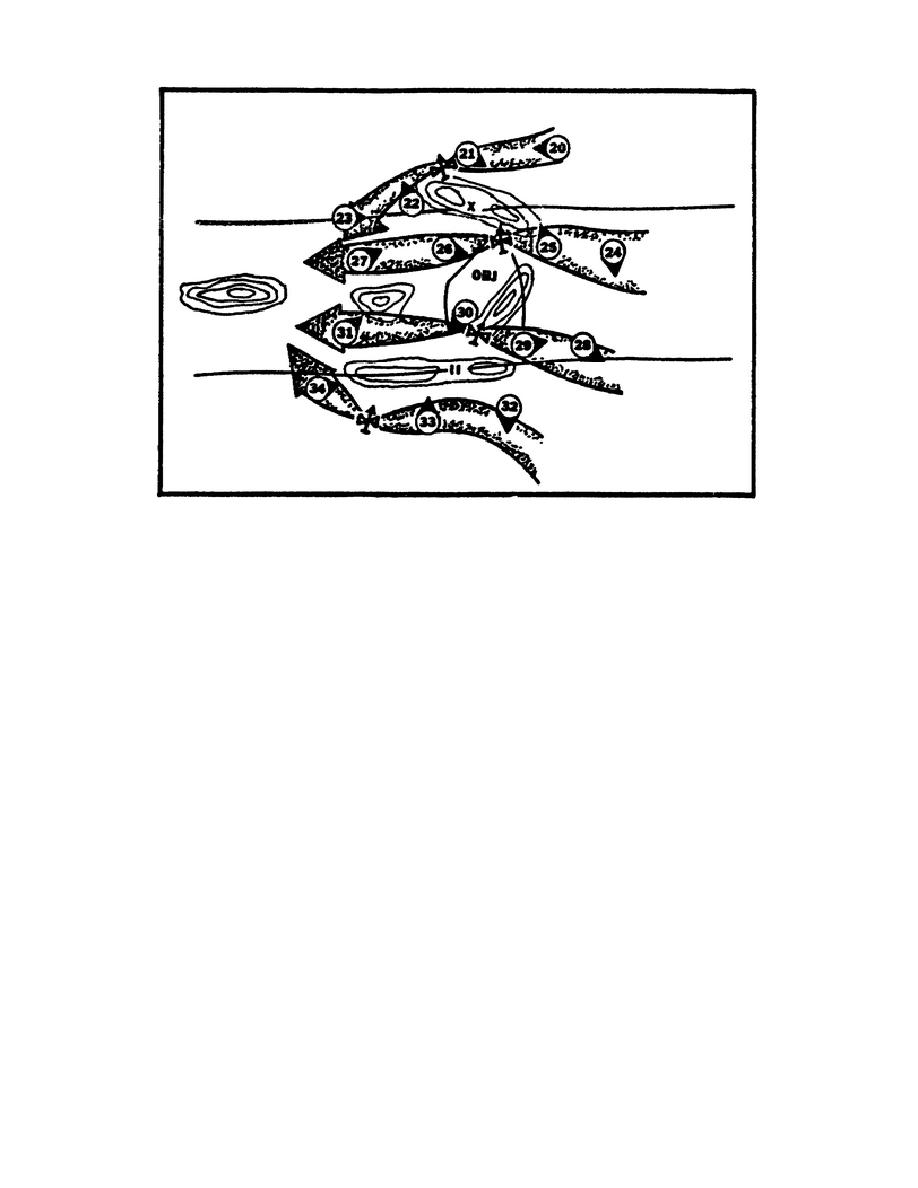
Figure 7-15. Air event template.
Decision support templates (DSTs) for air-associated operations are based on event
templates. Separate DSTs are normally constructed for friendly air defense and
airborne or air assault operations. Separate DSTs may also be constructed for
friendly CAS and battlefield air interdiction operations if the time and situation
permit. All air-associated DSTs should show the air avenues of approach and
mobility corridors, the ranges of friendly and enemy air defense systems, TAIs, and
DPs. Due to its transitory nature, the current air situation is not shown.
However, the number of available sorties is shown for friendly operations.
TAIs and DPs are determined in much the same way as for ground operations.
However, due to high aircraft speeds, they must be placed significantly farther in
advance of the TAIs. When employing friendly aviation assets, these DPs must be
placed far enough in advance of the target to allow sufficient time for the
aircraft to be placed on strip alert and to arrive on target, and for associated
jamming and fire support programs to be placed into effect. When supporting air
defense operations, they must be placed to confirm the enemy plan of attack and to
allow sufficient target acquisition and firing time. When determining the effects
of the enemy's air defense effort, DPs are placed where enemy commanders would most
likely be forced by weather, terrain, and friendly aircraft corridors and profiles
to decide to employ their air defense assets to their greatest benefit.
The friendly air defense DST is a joint effort of the G3 or S3, G2 or S2, and the
air defense officer (DAME or CAME at division and corps). The friendly air
employment DST is a joint effort of the G3 or S3, G2 or S2, fire support office
(FSO), and the combat aviation brigade commander or air liaison officer.
IT 0462
7-26



 Previous Page
Previous Page
